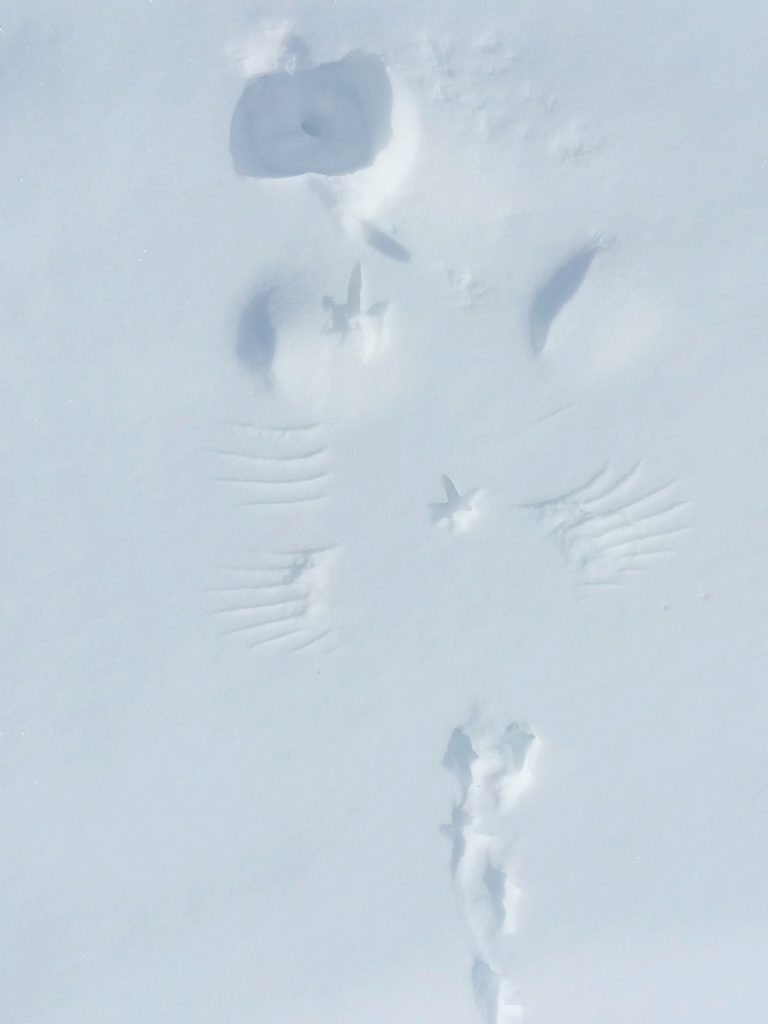Cullen and I took a snowshoe hike this afternoon; to give Cullen some exercise and trim overhanging branches that threatened to poke my eyes. During the hike we saw raccoon tracks and lots of Ruffed Grouse snow shelters.
The ruffed grouse is famous for its winter roosting routine, commonly referred to as “snow roosting.” With no snow, or just a few inches of it, the bird is likely to seek protection in conifer stands. If the snow is soft and a foot or more deep, however, the grouse is likely to spend the night in an insulated, air-filled snow tunnel. The grouse builds this tunnel by first plunging from a tree into the snow. Then with its wings and feet the grouse extends the tunnel, sometimes to as much as 10 feet. Recent research suggests that the temperature in a snow hideaway may warm to 32 degrees Fahrenheit and that it rarely falls below 20 degrees—even when it is much colder outside. This tunnel helps the grouse conserve energy, so it needs less food. Less time spent in the open also means less time being exposed to predators. A ruffed grouse exits its tunnel with a flap of wings and burst of snow that will scare the daylights out of any snowshoer or skier happening by.

